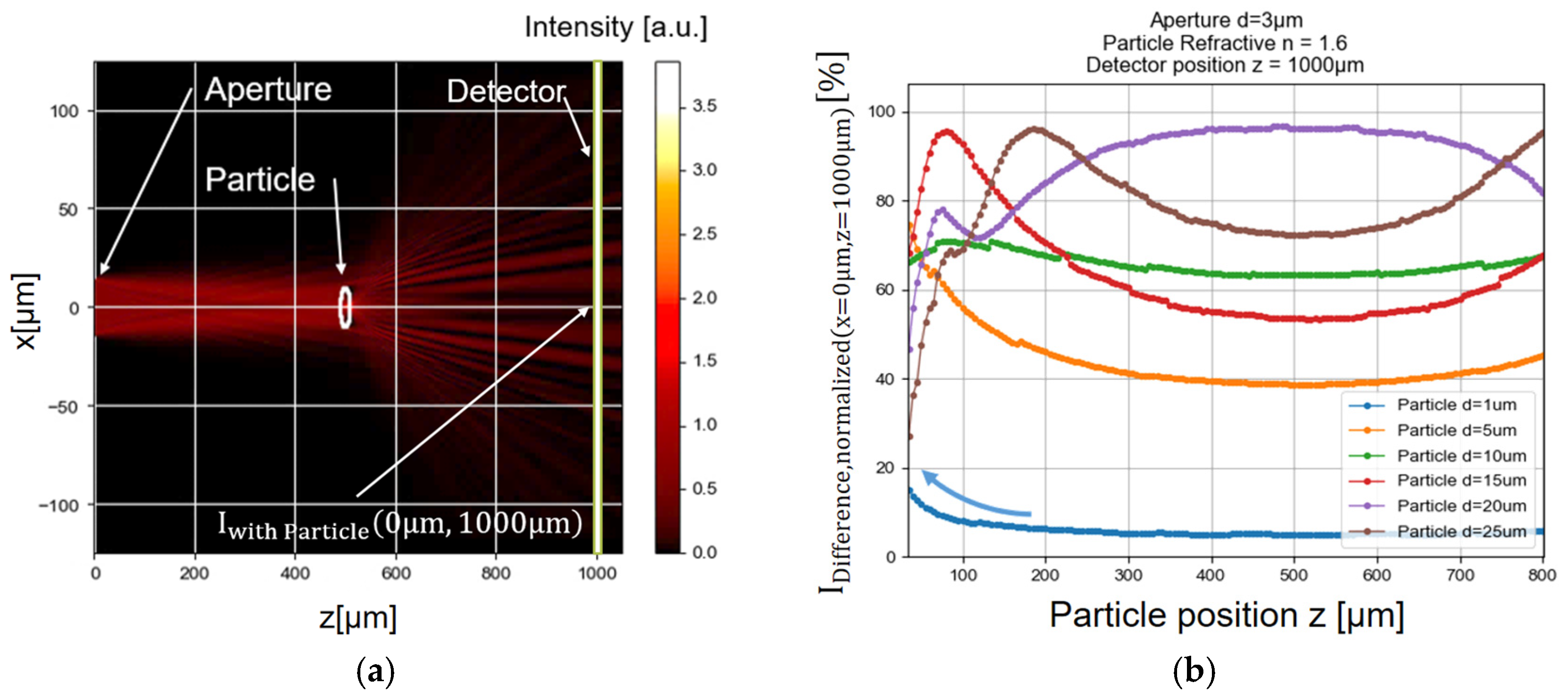Optofluidic Particle Detection †
Abstract
:1. Introduction
2. Detection Setup
3. Results
Funding
References
- Frankowski, M.; Theisen, J.; Kummrow, A.; Simon, P.; Ragusch, H.; Bock, N.; Schmidt, M.; Neukammer, J. Microflow Cytometers with Integrated Hydrodynamic Focusing. Sensors 2013, 13, 4674–4693. [Google Scholar] [CrossRef] [PubMed]
- Mariana, S.; Scholz, G.; Yu, F.; Dharmawan, A.B.; Syamsu, I.; Prades, J.D.; Waag, A.; Wasisto, H.S. Pinhole microLED Array as Point Source Illumination for Miniaturized Lensless Cell Monitoring Systems. Proceedings 2018, 2, 866. [Google Scholar]
- Zhang, J.; Yan, S.; Yuan, D.; Alici, G.; Nguyen, N.T.; Warkiani, M.E.; Li, W. Fundamentals and applications of inertial microfluidics: A review. Lab Chip 2016, 16, 10–34. [Google Scholar] [CrossRef] [PubMed]

Publisher’s Note: MDPI stays neutral with regard to jurisdictional claims in published maps and institutional affiliations. |
© 2020 by the authors. Licensee MDPI, Basel, Switzerland. This article is an open access article distributed under the terms and conditions of the Creative Commons Attribution (CC BY) license (https://creativecommons.org/licenses/by/4.0/).
Share and Cite
Agluschewitsch, V.; Garcés-Schröder, M.; Waag, A. Optofluidic Particle Detection. Proceedings 2020, 56, 26. https://doi.org/10.3390/proceedings2020056026
Agluschewitsch V, Garcés-Schröder M, Waag A. Optofluidic Particle Detection. Proceedings. 2020; 56(1):26. https://doi.org/10.3390/proceedings2020056026
Chicago/Turabian StyleAgluschewitsch, Vladislav, Mayra Garcés-Schröder, and Andreas Waag. 2020. "Optofluidic Particle Detection" Proceedings 56, no. 1: 26. https://doi.org/10.3390/proceedings2020056026
APA StyleAgluschewitsch, V., Garcés-Schröder, M., & Waag, A. (2020). Optofluidic Particle Detection. Proceedings, 56(1), 26. https://doi.org/10.3390/proceedings2020056026



